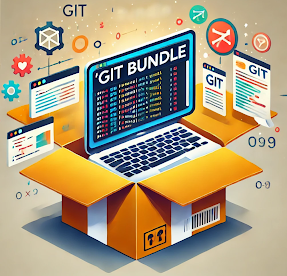TIL - Git bundle TIL, Today I Learned, is more of a "I just figured this out: here are my notes, you may find them useful too" rather than a full blog post
The git bundle [1] subcommand has been around for many years but is something I came across quite recently.
The command allows you to create, unpack, and manipulate bundles files, which are used to share git repositories without an active server. Think of it as just a git repository packed into a tar archive with a set of handy extras.

